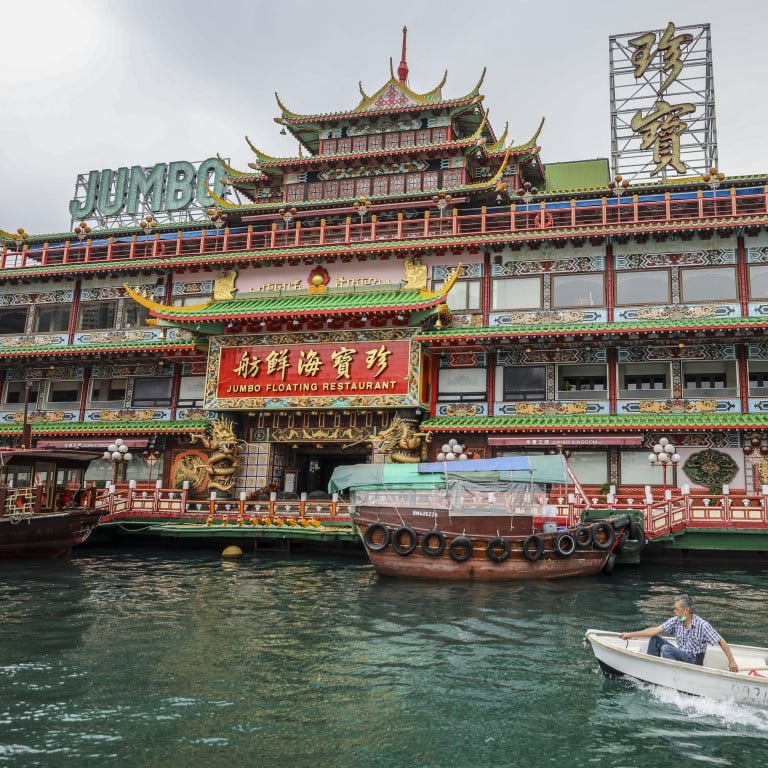The rise and fall of Hong Kong’s Jumbo Floating Restaurant: celebrities from Queen Elizabeth to Tom Cruise flocked to the iconic tourist destination – but what will happen to it now?

- Late billionaire and casino tycoon Stanley Ho opened the Cantonese and seafood restaurant in 1976 – but it lost millions during Covid-19 and its kitchen barge just capsized
- It was a movie set for James Bond film The Man With The Golden Gun and Stephen Chow comedy The God of Cookery – now fans are calling for it to be saved on Instagram
One of Hong Kong’s most iconic tourist destinations, Jumbo Floating Restaurant, is set to leave the city.
After wowing tourists with its grand imperial palace-like design for almost 50 years, the world’s largest floating restaurant is on its way out due to financial difficulties.

Although no date has been set, the restaurant’s parent company, Aberdeen Restaurant Enterprises, said last month that the tourist attraction would be looking for a new home outside the city in June.
It’s sad news for Hong Kong residents and foreigners alike, many of whom have viewed the extravagant restaurant as a must-see spot ever since it was opened by the late Macau casino tycoon Stanley Ho in 1976.

More than just the food it served – mostly seafood and refined Cantonese cuisine – the eatery was also a novelty for the many tourists who simply enjoyed the journey by a ferry shuttle to get there in the first place.

In its heyday, visitors flocked to the restaurant for glamorous banquet meals. With more than 45,000 sq ft of space over three floors, the 76 metre-long (246 feet) restaurant could seat 2,300 diners. Its banquet halls could host everything from corporate dinners to weddings.